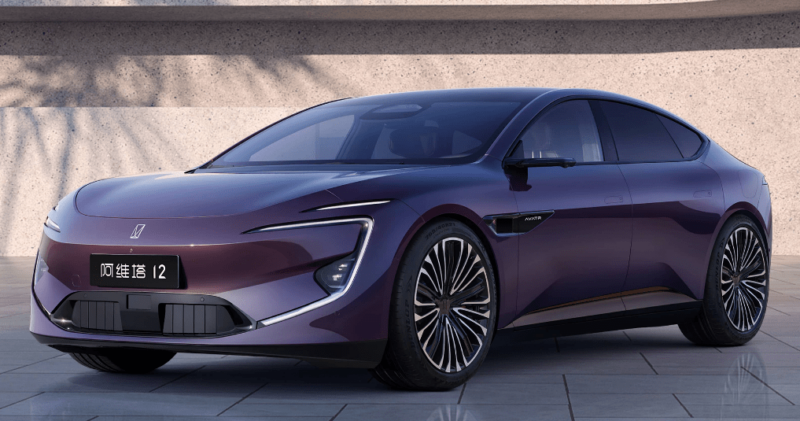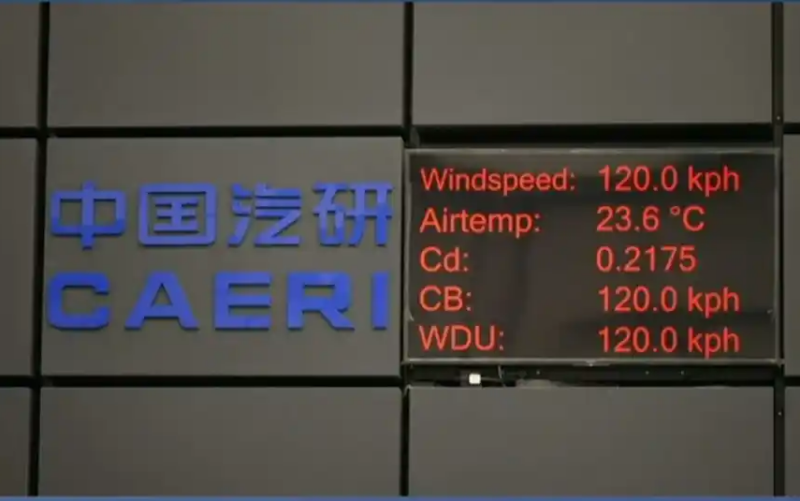Chinese electric vehicle brand Avatr conducted a live-streamed wind tunnel test of its Avatr 12 sedan tonight, May 9, at 6:00 PM local time. The event followed a public controversy ignited by a blogger who challenged the company’s previously advertised drag coefficient (Cd) figure for the vehicle.
The controversy began when automotive blogger “Zurich Bei Le Ye” (苏黎世贝勒爷) posted a video claiming his independent test at the China Automotive Technology and Research Centre (CATARC) wind tunnel in Tianjin measured the Avatr 12’s drag coefficient at 0.28 Cd. This figure is significantly higher than Avatr’s official promotional claim of 0.21 Cd, a difference of over 30%. The blogger noted this figure was comparable to a 20-year-old internal combustion engine car like the Passat B5.
Avatr’s legal department responded, calling the blogger’s information “completely false” and announced the live wind tunnel test to “self-certify” their claims. Adding an international dimension to the dispute, Avatr publicly invited Elon Musk to witness the test, after Musk reportedly shared the blogger’s controversial video on the social media platform X.

However, the blogger at the centre of the controversy stated that Avatr explicitly informed him he would not be invited to the live test.

The incident has also brought broader attention to the standards, or lack thereof, for automotive wind resistance testing. Experts note that there is no mandatory national standard for wind resistance testing in China, and manufacturers can use various methods, including prototype vehicles or even data simulation, which can lead to differences between advertised figures and real-world results. While a slight difference might be acceptable, a significant discrepancy like the one claimed could potentially mislead consumers, particularly regarding vehicle range, as a lower drag coefficient generally contributes to better energy efficiency and more extended range in electric vehicles.

The results show that under low drag conditions at 120 kph (75 mph), the measured drag coefficient is 0.217 Cd, which is 22% lower than the 0.28 Cd previously measured by the blogger.

Subsequently, Avatr replaced the low-drag wheels with sport wheels and measured a drag coefficient of 0.2326 Cd at 120 kph (75 mph), which is 16.9% lower than the blogger’s measured result.

Avatr 12 was also equipped with regular exterior rearview mirrors and raised suspension for cross-validation of the high-drag state, resulting in a measured drag coefficient of 0.2509 Cd at 120 kph (75 mph).

Additionally, Avatr conducted measurements on the 12 with the front intake grille open, and at a speed of 120 kph (75 mph), the vehicle’s drag coefficient was 0.2743Cd.

Editor’s comment
If this test can demonstrate anything, it can only show that drag coefficients measured under different conditions vary significantly. Seemingly to illustrate this point, Avatr even tested the drag coefficient by tilting the car body by five degrees, which naturally resulted in higher drag but is pointless. Today, BYD Han L also announced its drag coefficient of 0.212, indicating that Chinese new energy vehicles have made tremendous progress in design capabilities compared to the past, driven by intense competition.


